Hildreth Meière Documentary Series - Watch Trailer
Hildreth Meière Documentary Series - Watch Trailer
Commissioned by: Bertram Grosvenor GoodhueIconographer: National Academy Building CommitteeArtistic Collaborator: Bertram Grosvenor GoodhueMedium: painted and gilded raised gessoExecuted by: Mack, Jenny & TylerAdditional fabricators: R. Guastavino, acoustic plaster
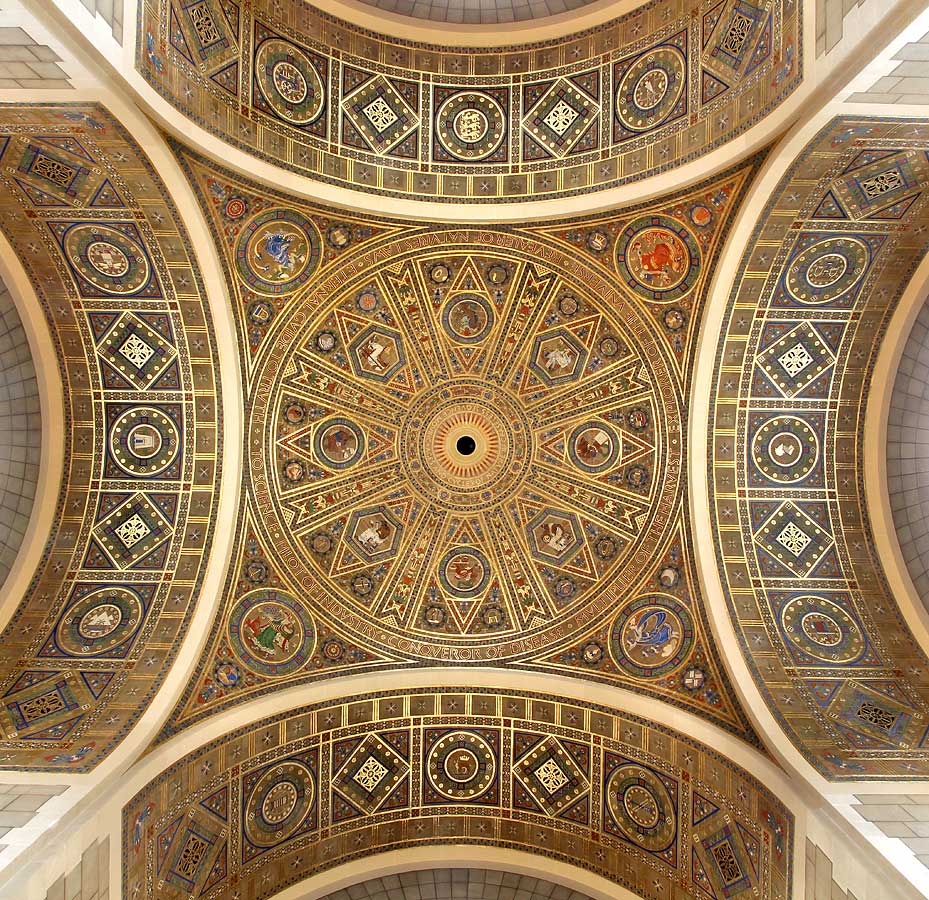
Dome, pendentives and arch soffits of Great Hall in painted and gilded raised gesso
Architect Bertram Grosvenor Goodhue gave Hildreth Meière her first major architectural commission, the decoration of the Great Hall of the National Academy of Sciences.1 She intuitively grasped the collaborative role that Goodhue required. Her job was to enhance his vision of a building by depicting an iconography in visually striking symbols that would convey the building’s purpose and be integral to the architecture.
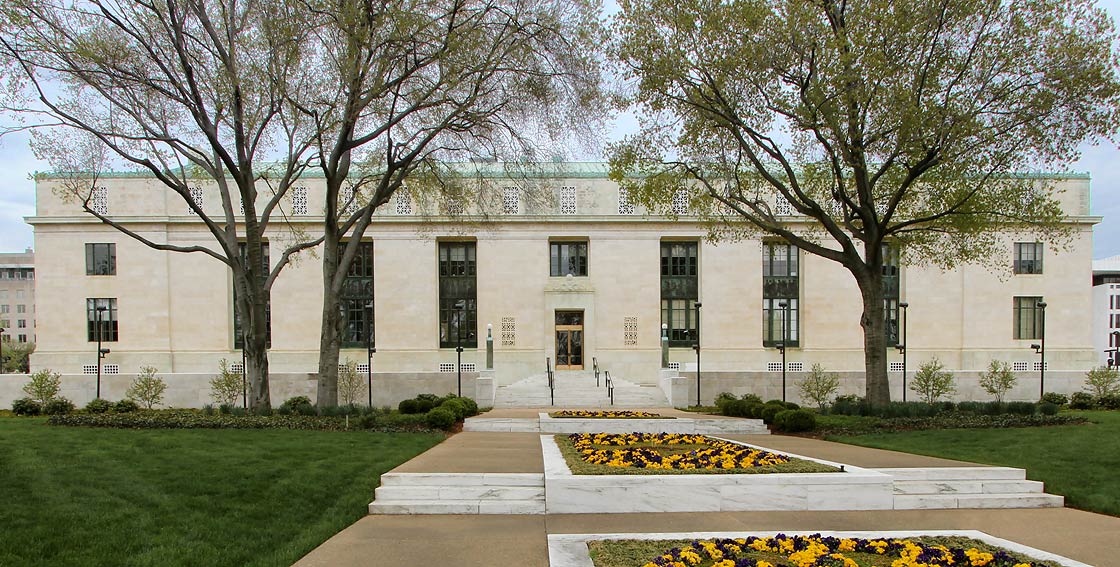
Bertram Grosvenor Goodhue, National Academy of Sciences, 1924
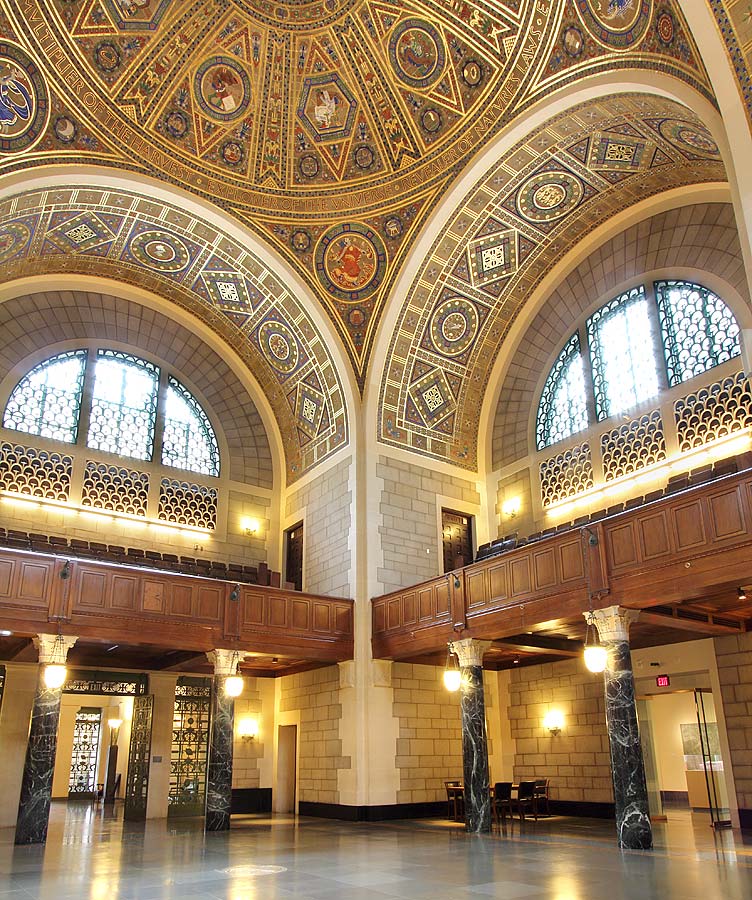
Interior of Great Hall
Goodhue encouraged the young Meière to develop a personal style, suggesting simply that her design should resemble classical Greek vase painting. Meière followed his suggestion:
I copied and traced [Greek vases] until I thought I had the spirit. Then I looked at Egyptian and contemporary art, as their coloring seemed appropriate...Then, disregarding most of my researches, but being influenced by them, I started designing.2
The iconography of the dome is the History of Science as Known in 1922. Meière worked in a neoclassical style in depicting the iconography on the dome.
She moved away from neoclassicism in depicting figures of the Four Elements on the pendentives. These were influenced by a new international style that Meière had seen in Paris in 1923, later known as Art Deco.
On each of the four pendentives, Meière depicted a large medallion containing an allegorical figure of one of the Four Elements—Earth, Air, Fire, and Water:
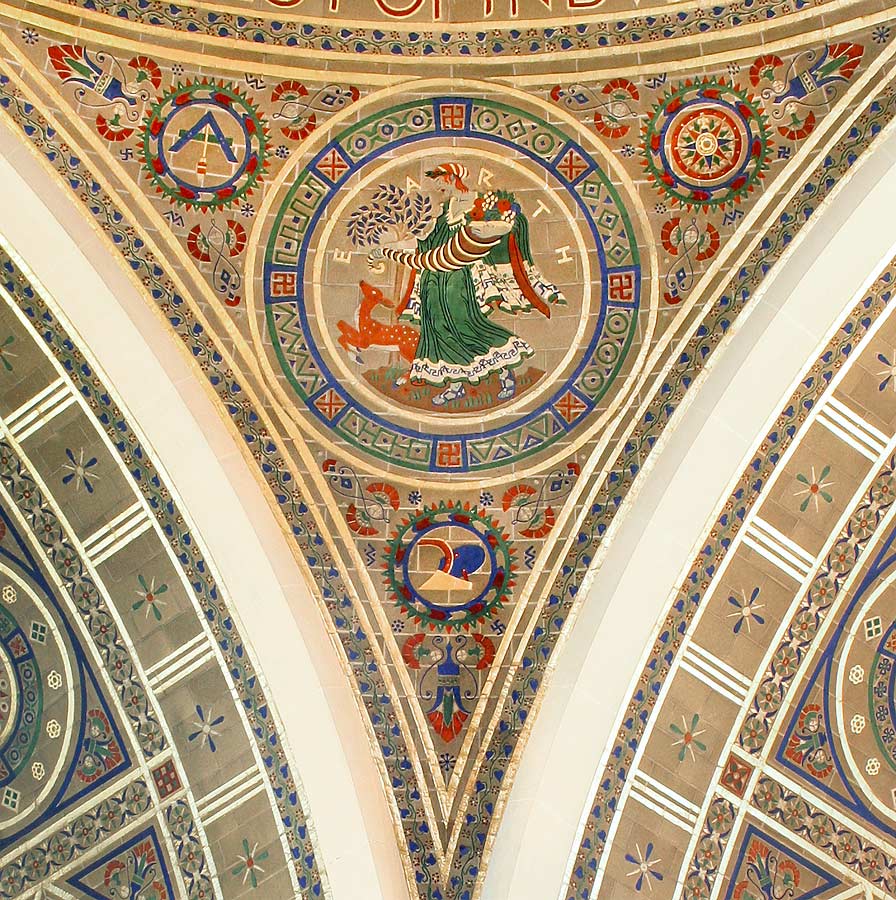
Earth
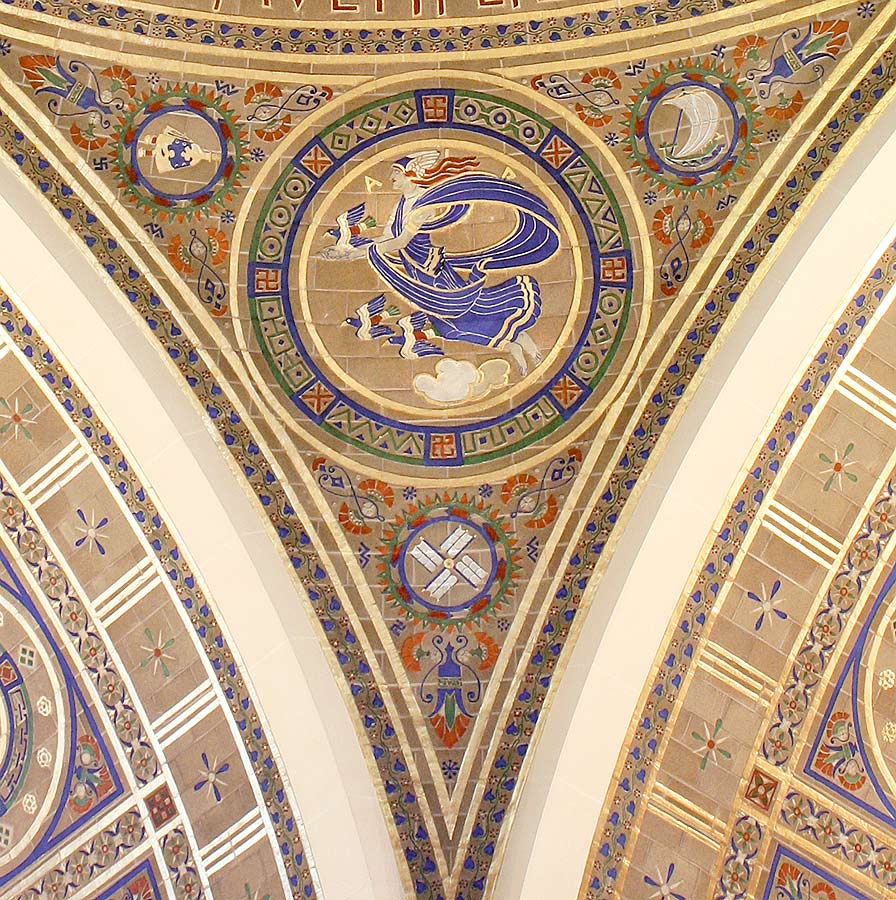
Air
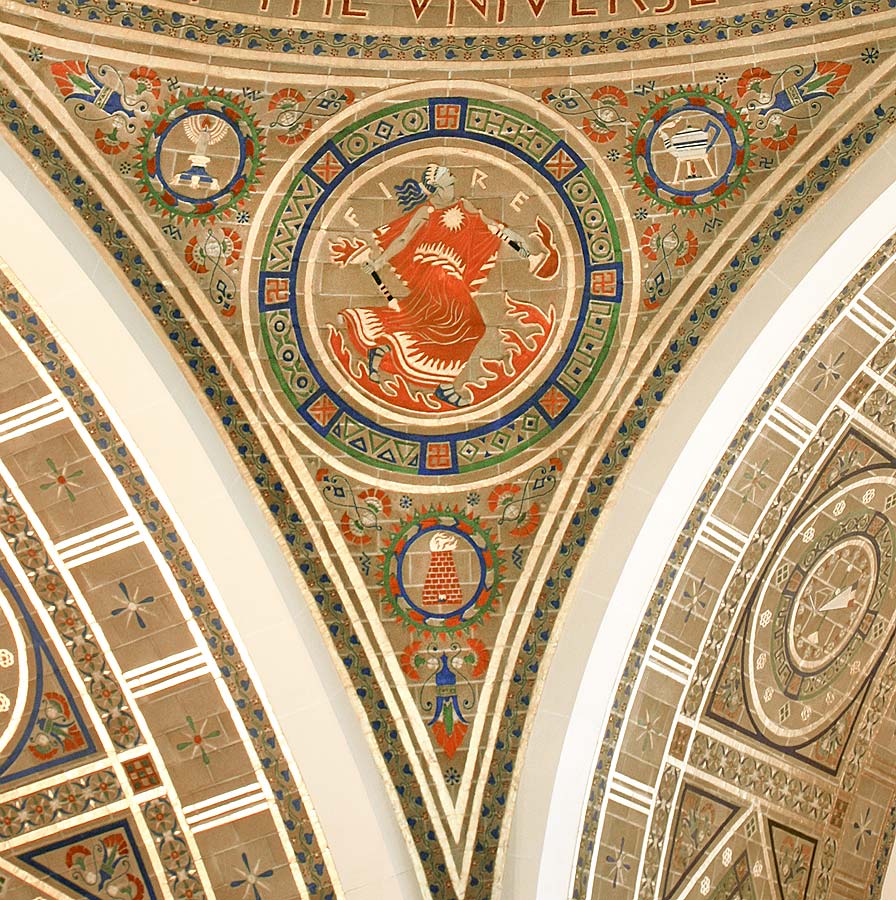
Fire
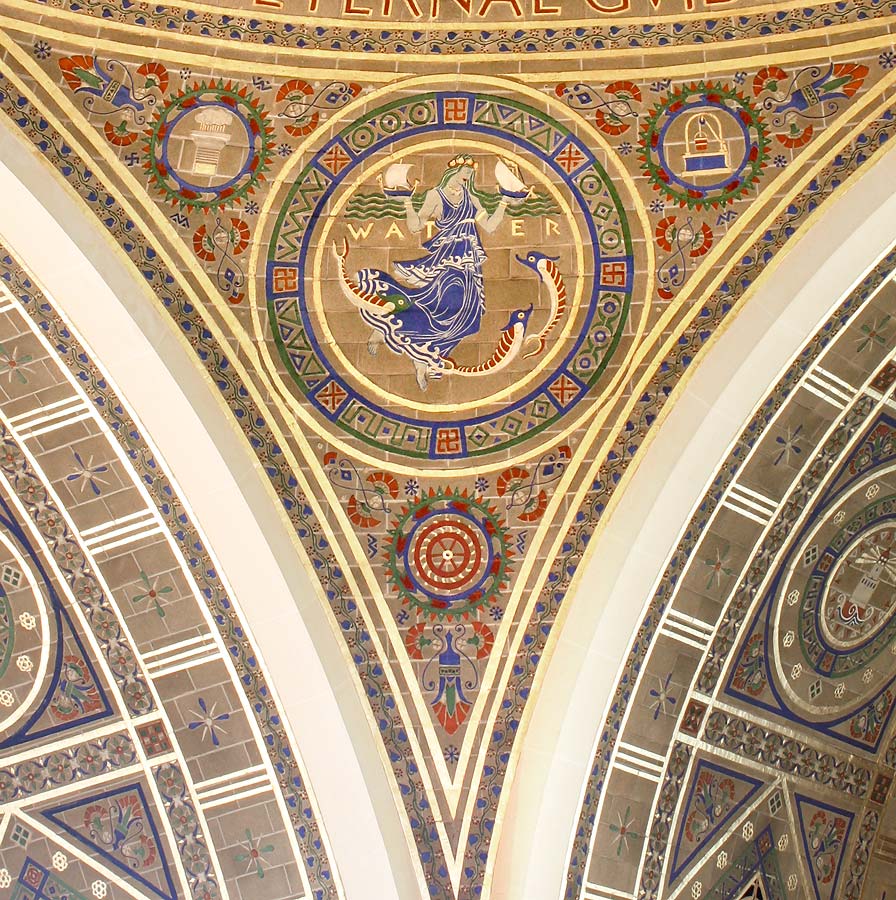
Water
Each element is surrounded by smaller medallions containing three of man’s inventions that utilize that particular element. Earth is surrounded by a level with pendulum bob, compass, and plowshare; Air is accompanied by a bellows, windmill, and sailboat; Fire, by a candle, teapot, and kiln; and Water, by a well, water wheel, and a depiction of the three stages of water—vapor, liquid, and ice.3
Meière wrote to her mother that Goodhue was delighted with the figures. “He loves Air and Water as I hoped he would...”4
Goodhue died in April 1924, just days before the dedication of the National Academy. Meière readily acknowledged her debt to him:
Goodhue believed that the great building would result from the architect who had found the right sculptor and the right painter. . . . he had no regular painter, and he said to me when I first worked for him, ‘I’ve been looking for you for years.’ I only did three jobs for him, but the association with him and his ideas were a determining factor in my work and career.5
For a full discussion, see Catherine Coleman Brawer and Kathleen Murphy Skolnik, The Art Deco Murals of Hildreth Meière (New York: Andrea Monfried Editions, 2014): 44-58.
Hildreth Meière, “Distinguished Artist Comes Home for Visit: Miss Hildreth Meière Tells of the Interesting Work in which She Is Engaged,” Women’s City Club Magazine (San Francisco) 1:2 (March 1927): 10.
The iconography is described in a brochure published by the National Academy, n.d., Washington, DC.
Hildreth Meière, letter to mother, October 2, 1923, Hildreth Meière Papers, Archives of American Art, Smithsonian Institution, Washington, DC.
Meière, letter to Mr. Thompson, May 23, 1936, HM Papers.
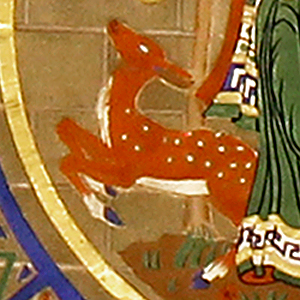
National Academy of Sciences
2101 Constitution Avenue, NW
Washington, DC 20001